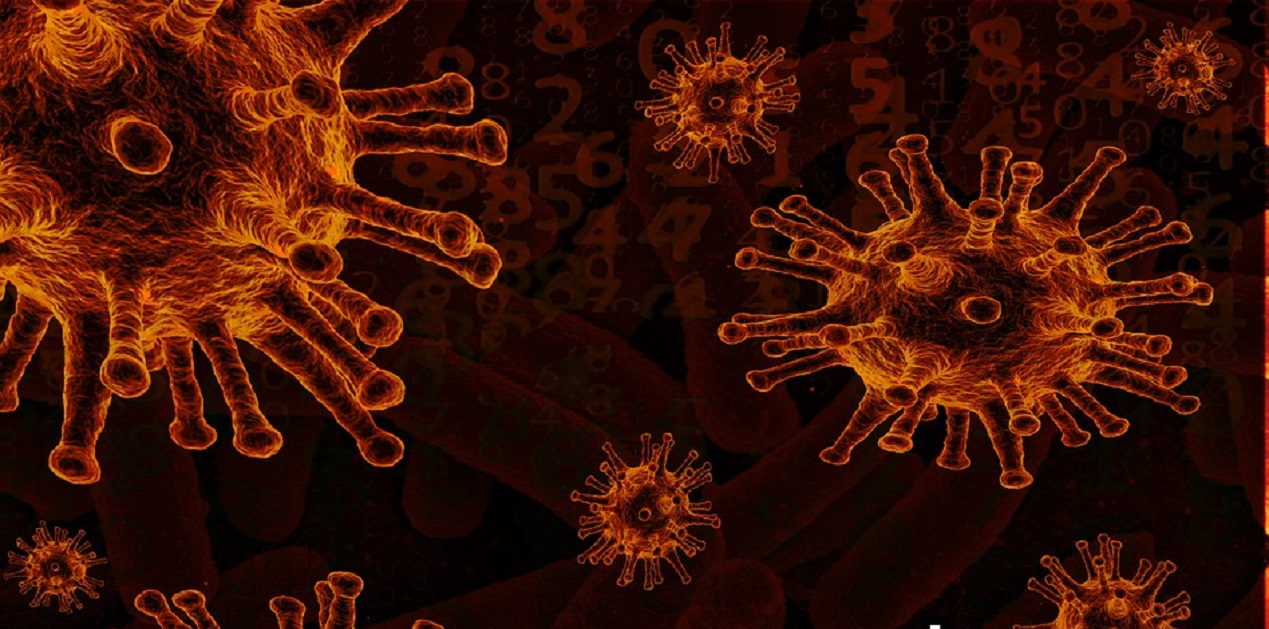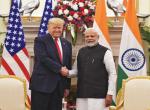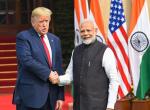Strategic
Leaders, Do You Have a Clear Vision for the Post-Crisis Future?- HBR
As the Covid-19 pandemic shakes the global economy and disrupts the way we live, work, and conduct business, leaders are scrambling to manage the immediate fallout. But, as history proves, it’s also necessary to prepare for what’s next. Vision is especially urgent during a crisis as global and systematic as this one. Inflections that you might have had five years to anticipate in a normal environment might unfold in a matter of weeks or months. Trend lines, such as those towards telecommuting, telemedicine, online shopping, and digital media consumption, are suddenly much steeper. Global supply chains are broken. Some of the fundamental assumptions underlying current business model may have been (or may soon be) upended. In short, the environment that you land in when the pandemic comes to an end — which could be one to two years from now — may be very different from what it was before the crisis began. You need to begin preparing for it now. Work backwards, lay out a path from your long-term aspiration to the mid-term (your post-crisis focal point), and from there to today. There is need to reverse-engineer a series of benchmarks and milestones at regular intervals along the way.
Warnings of unrest mount as coronavirus hits food availability
In a statement after the G20 meeting of Agriculture ministers, it was agreed to “guard against any unjustified restrictive measures that could lead to excessive food price volatility in international markets and threaten the food security and nutrition of large proportions of the world population”. Weakening emerging market currencies have pushed up the cost of imports for countries that are reliant on overseas food purchases and raised the cost of debt repayments for borrowings in dollars, eroding countries’ capacity to finance imports. While G20 nations have agreed to freeze bilateral government loan repayments for low-income countries until the end of the year, some emerging economies have said the efforts are insufficient. The World Food Programme has appealed for donor nations to pay $1.9bn of already-pledged commitments early to help it stockpile food for distribution to vulnerable countries when needed. It also asked for a further $350m to finance air transport to affected nations.
Hindered supply chains spur farmers to destroy food
Redirecting farm production to grocery stores has proved difficult because of the differing demands of commercial food operations and people cooking in their kitchens. The result has been farmers destroying their products as Americans line up by the thousands outside food banks. While officials maintain there is no immediate threat of food shortages, no one is sure how long it will take to re-engineer supply chains so more food can reach stores and farmers can earn their keep. The US food bottlenecks have been exacerbated by the closing of several meat processing plants after workers were infected with coronavirus. Cattle have been less immediately affected by plant closures since they can be put to pasture, but managing beyond a month is seemingly hazardous for many ranchers. The looming issue for crop growers is that they do not have much time to waste. Decisions will soon need to be made about how much money to invest in planting new crops for harvest. Planting the next harvest is equally critical.
Number of humanitarian relief trucks into NW Syria record high: UN
The largest number of humanitarian relief trucks in six years crossed from Turkey into northwest Syria in March with aid for 2.8 million displaced people, a UN spokesman said on April 21. StephaneDujarric, spokesman for UN Secretary-General Antonio Guterres, said the fast pace was continuing this month as part of a step-up of the cross-border response efforts. This is to address the needs of 2.8 million people, including hundreds of thousands of people displaced since Dec. 1, Dujarric said. In March, more than 1,480 trucks carrying food, shelter material, water, sanitation, hygiene and nutrition assistance were sent into northwest Syria through the Bab al-Hawa and the Bab al-Salam border crossings, he said. "These are authorized by the Security Council," the spokesman told correspondents at a regular virtual briefing. "This is the largest number of trucks sent in a single month since the cross-border operation began in 2014."
Report offers insight into China’s COVID-19 response
China Daily published a bilingual report on April 21 detailing China's measures to combat the COVID-19 outbreak to provide health workers and officials around the world a reference and glimpse into the country's herculean effort to overcome the epidemic (http://www.chinadaily.com.cn/a/202004/22/WS5e9e4802a3105d50a3d17964.html). The report, "China's Fight against COVID-19", features six chapters with topics ranging from social mobilization to treatment plans. It was compiled in collaboration with the Institute of Contemporary China Studies at Tsinghua University and the School of Health Policy and Management at Peking Union Medical College.
IOC removes controversial statement on Tokyo Olympics' extra cost
The International Olympic Committee (IOC) on April 21 removed controversial comments declaring that Japan will pay the additional cost for the postponed Tokyo Games. The IOC prompted fury from Tokyo 2020 with a Q&A post released on April 20on its website, saying Japanese Prime Minister Abe Shinzo agreed that Japan will continue to cover the costs it would have done under the terms of the existing agreement for 2020, and the IOC will continue to be responsible for its share of the costs. The revised post read as "The IOC and the Japanese side, including the Tokyo 2020 Organizing Committee, will continue to assess and discuss jointly the respective impacts caused by the postponement". Japan's Chief Cabinet Secretary Yoshihide Suga told reporters on April 21 that Japan and the IOC had not agreed on the extra costs. Japan is officially spending $12.6 billion to organize the Olympics, but a government audit report says it's at least twice that much. According to organizing committee documents, the IOC has already contributed about $1.3 billion to organize the Tokyo Olympics. This is from income of $5.7 billion in the latest four-year Olympic cycle.
UN member states demand equal access to viral vaccine
The 193 members of the UN General Assembly on April 20 adopted by consensus a resolution drafted by Mexico and supported by US, for strengthening the "scientific international cooperation necessary to combat COVID-19 and to bolster coordination," including with the private sector. The resolution asks Secretary-General Antonio Guterres to "identify and recommend options, including approaches to rapidly scaling manufacturing and strengthening supply chains that promote and ensure fair, transparent, equitable, efficient and timely access to and distribution of preventive tools, laboratory testing, reagents and supporting materials, essential medical supplies, new diagnostics, drugs and future COVID-19 vaccines." It also asks that such measures to develop and share treatments and vaccines are taken "with a view to making them available to all those in need, in particular in developing countries." The resolution is the second adopted by the assembly about the new coronavirus pandemic. The first one, adopted earlier in April, also called for international cooperation in fighting the spread of the disease.
Myanmar's generals take centre stage in coronavirus battle
Myanmar's military has taken the lead in managing the country's novel coronavirus outbreak, a sign that the armed forces could once again rise to dominate politics here. This has serious implications for the ruling National League for Democracy, a party helmed by Myanmar's de facto leader, State Counsellor Aung San SuuKyi. At least 119 people have been infected as of April 20, according to the country's health ministry. "If the government is unable to control the epidemic, we will take action to protect citizens," such as shutting down major roads, a senior military official told Nikkei. As part of Myanmar's power-sharing agreement, Suu Kyi's government has no control over the armed forces or security personnel. The constitution, as written by the junta prior to the 2015 general election, reserves 25% of the legislative seats to military figures. That gives the armed forces veto power over constitutional amendments, since such motions need a supermajority of over 75% to pass. That has not stopped the NLD from trying to change the constitution. A proposed amendment that would dilute the military's involvement in state affairs was defeated in the legislature last month.
Unfavourable views of China jump 20 points to 66% in US: Pew
American opinion toward China and its leadership has hit a historic low as the two countries wrestle to shape the coronavirus narrative, new data from the Pew Research Centre shows. Roughly 66% of U.S. adults said they have an unfavourable view of China in a survey out on April 21-- the most since Pew started asking about it in 2005 and marking a jump of nearly 20 percentage points from 2017, the Trump administration's first year. And 71% said they have no confidence in Chinese President Xi Jinping to do the right thing in world affairs, up from 50% last year and the highest since the centre began asking in 2014, when the reading was 58%. The share of respondents seeing China's growing power and influence as a major threat to the U.S. increased 14 points from 2018 to 62%. "But while half or more of those 50 and older have held negative views of China since 2012, this is the first year in which more than half of younger Americans also have an unfavourable opinion," Pew noted. "Among this age group, negative views have roughly doubled since the question was first asked."
Mozambique’s Islamist insurgency adds to gas industry nerves amid pandemic
An escalating Islamist insurgency in Mozambique’s far north-east is intensifying the risks facing the country’s vast new offshore gas developments at a time when the coronavirus pandemic is decimating demand. Global energy groups have committed themselves to billions of dollars in investment in the country since the world’s largest offshore gas field was discovered off Cabo Delgado in 2011. The militants — until recently an obscure group mounting low-level attacks across remote villages in the Cabo Delgado province — have this month swept through major towns and declared their ambition to replace the secular authorities represented by the government of President Filipe Nyusi with an Islamic state. The attacks have been ferocious: Mozambique’s armed forces confirmed on April 21 that 52 people were massacred in one incident. Hundreds have been killed since the insurgency began in 2017 and more than 100,000 have been displaced.
Half of world’s locked-down pupils lack computer: UN
Half of the world’s school and university students affected by class closures because of the coronavirus outbreak — from pre-primary to university level — do not have access to a computer for home-schooling, the UN’s educational agency said on April 21. Highlighting “startling digital divides” between the rich and poor, a UNESCO statement added that 43 percent of young people have no access to Internet at home. “Disparities are particularly acute in low-income countries: in sub-Saharan Africa, 89 percent of learners do not have access to household computers and 82 percent lack Internet access,” the agency said. “We now know that continued teaching and learning cannot be limited to online means,” UNESCO Director General Audrey Azoulay said in a statement. “We must also support other alternatives including the use of community radio and television broadcasts, and creativity in all ways of learning.” “Even for teachers in countries with reliable information and communication technology (ICT) infrastructure and household connectivity, the rapid transition to online learning has been challenging,” it added.
Economic
Companies must strengthen their buffers against shocks
The Covid-19 outbreak has exposed the thin margins on which much of global business runs. Highly indebted companies, working from lean inventory, supported by just-in-time supply chains and staffed by short-term contractors, have borne the brunt of the sudden blow. They will now suffer the rolling, longer-term impact of its unpredictable consequences. Too late, many executives and owners have realised that by pursuing the holy grail of ever greater efficiency; they sacrificed robustness, resilience and effectiveness. In many cases, they will turn out to have sacrificed the business itself. As managers wrestle with how to restart production lines and re-staff offices, they must also consider how to prepare for inevitable future shocks. These include not just a resurgence of this virus but different, perhaps more dangerous, pandemics, or the longer-term disruption of climate change. Like the banks after the global financial crisis, businesses will need to build thicker buffers against shocks. If they do not, governments and regulators will need to find ways to encourage or oblige them to shore up their defences.
Virus Imperils European Farming
Covid-19 has raised questions about the viability of an economic system built on borderless migration and a single marketplace—especially in the bloc’s agricultural industry. Normally, workers from poorer parts of the European Union, particularly Central and Eastern Europe, would take many of these jobs. Now, with many borders closed because of the coronavirus pandemic, many in Western Europe are rethinking the dependence on distant pools of labour—and are trying to spur an interest in farm work among people closer to home. The crisis is putting other practices of European agriculture under scrutiny, including the use of long-haul trucks to move livestock and produce, and farms’ growing specialization on niche, luxury products such as white asparagus. While the Trump administration has recently taken steps to make it easier for farms to hire migrant workers, on April 20, President Trump said all immigration would be temporarily halted. The executive order is expected to include exceptions for farmworkers, but details weren’t available.
Southeast Asia’s hydropower boom grinds to a halt as COVID-19 stalls projects
Incomplete and prospective hydropower dam projects in Southeast Asia, particularly along the Mekong River and its tributaries, are at risk of major delays and shutdowns as the COVID-19 pandemic impacts major industries, energy markets and worker safety. Climate change is already biting in Laos and it is one of the reasons the government has admitted it needs to more carefully review its hydropower dependency. Recent reports that China had deliberately withheld water on its portions of the Mekong - contributing to weak flow and dry-river conditions downstream, have exacerbated concerns about the dams’ reliability. For Laos, which has positioned itself to be the battery of Southeast Asia, the risks and costs are already mounting. The permanent secretary of Laos’ Ministry of Energy and Mines told CNA late last year that solar projects were being considered as a complement or substitute to unreliable hydro production. “The current low gas prices, for instance, is tempting for many countries seeking cheaper electricity,” said the Mekong River Commission (MRC) secretariat.
Bangladeshi garment workers face ruin as global brands ditch clothing contracts amid coronavirus pandemic
The coronavirus pandemic has led factories to furlough or lay off more than half of the country's nearly 4.1 million garment workers, according to estimates from the Bangladesh Garment Manufacturers and Exporters Association (BGMEA). Global lockdowns and unprecedented job losses have caused demand for just about anything that isn't food to evaporate, including clothing. That's led the international apparel brands and retailers who rely on the cheap labour that Bangladesh provides to cancel or suspend an estimated $3.17 billion worth of orders in the country, according to BGMEA. Garments make up roughly 80% of Bangladesh's exports, Trading Economics says, and generated more than $30 billion last year, according to the country's Export Promotion Bureau — making it the second biggest exporter of such goods in the world after China. In total, the industry contributes 16% of Bangladesh's GDP.
Huawei sees delays to 5G in Europe as its first quarter revenues flat-line
Growth at Chinese telecom group Huawei came to an abrupt halt in the first three months of the year as the coronavirus outbreak brought its home country to a near standstill. The Shenzhen-based firm reported first quarter revenue of 182 billion yuan ($25.7 billion), an increase of just 1.4% compared to the same period a year earlier. That is a huge drop from growth of 39% it reported for the January to March period in 2019. It also warned of a delay to the rollout of 5G networks in Europe. April 21's announcement, which was light on details, marks just the second time the privately held company has released first quarter earnings. The build out of ultrafast 5G networks continues as planned in China, according to Huawei. But "in Europe it will certainly be delayed, we don't know how long," said Huawei spokesperson Evita Cao. The global 5G rollout has also been hampered by unfounded claims about a supposed link between 5G and Covid-19.
Ventilators rely on rare earths
A prosperity index for China's rare-earth industry showed contraction for the first quarter, with rising prices and shrinking output, but analysts said annual output will be stable. Supplies of permanent magnets, a rare-earth product and raw material for making life-saving ventilators will meet market demand. Rare-earth products are widely used to manufacture critical medical devices including ventilators, according to the Baotou Research Institute of Rare Earths. While permanent magnets made from rare earths will not be a headache for ventilator makers and other medical equipment producers, business insiders worry about supplies on the industry chain, affected by the COVID-19 pandemic. A ventilator is assembled from hundreds of parts in a supply chain that typically spans several continents. The best-known types of medical equipment are magnetic resonance imaging and computed tomography devices, which are made with rare-earth permanent magnetic materials. Output of rare-earths will increase in the second quarter as production was restarted after the coronavirus was brought under control. There is an annual quota in China, which remains stable these years, Yang Kunhe, chief metals and mining analyst at Pacific Securities, told the Global Times.
Storage space hunt steps up as glut grows
Hundreds of millions of barrels of crude have gushed into storage worldwide in the past two months as the coronavirus-related lockdowns wiped out around a third of global oil demand. With oil depots that normally store crude oil onshore filling to the brim and super tankers mostly taken, energy companies are desperate for more space. In Cushing, Oklahoma, home to dozens of large tank farms with combined space for about 76 million barrels, operators are fully booked, said traders. Storage there jumped by 5.7 million barrels the week before last, according to the latest US Energy Information Administration (EIA). In addition to the onshore glut, there are about 160 million barrels of oil sitting on tankers waiting for buyers. And at least six crude tankers carrying 2 million barrels apiece are en route to the US from Saudi Arabia, adding to the alarm at the US Gulf Coast.
Medical
How to reopen society more quickly
According to Uri Alon and Ron Milo at Israel’s Weizmann Institute of Science, we can exploit the way coronavirus develops in human beings to begin to open our societies for four days out of every 14. Most infected people are non-infectious for the first three days after infection and are at peak infectiousness at days 4-7. So for a 14-day cycle, people go to work for four days and then be locked down for 10. It would minimise the spread of the disease. The population could be divided into two sets of households that work on alternating weeks, each with a four-day work and 10-day lockdown schedule. That would spread productive activity across the period, and reduce population density, and therefore infection rates, on the workdays. The potential impact of this policy was simulated using what is known as the SEIR epidemiological model and a macroeconomic model, taking into account the virus’s spread and the extent of worker participation in the labour market, and hence in production. Applied to Israel, it predicts increases in unemployment of up to 21 percentage points, compared with 32 percentage points in lockdown scenarios.
How to Make At-Home Coronavirus Testing Work- Harvard Business Review
Home testing would start with a telemedicine call with a clinician to determine whether testing is needed. A test kit would then be mailed to your home, where you would perform the test and then send your sample to a laboratory for analysis. While awaiting the results, you would remain self-quarantined. The entire diagnostic process is done virtually, and for the vast majority of people who are low-risk and can be safely cared for at home, the entire diagnosis, treatment, and recovery process can be done at home. Such a service can promote social distancing — which is crucial for reducing the spread of the virus and improve health outcomes by freeing up capacity for hospitals and clinics to provide care for people who truly need it. Covid-19 self-testing will require three fundamental shifts in behaviours. The first is to encourage people to not run to a health care facility when they feel non-severe or life-threatening symptoms, but rather call a telemedicine service first. The second is to help people do the test correctly. Putting a cotton swab in your nose is not a natural act, it can cause physical discomfort and, if you do the test incorrectly, you can be subject to a false negative result. The third is to ask people to correctly and patiently self-quarantine for 48 to 72 hours until their test results come back.
Covid-19: High-dose chloroquinedisphosphate shows potential efficacy but safety concerns
On 7 April, preliminary results for a Phase II study being conducted by Fundação de Medicina Tropical D Heitor Vieira Dourado for high-dose chloroquinedisphosphate for Covid-19 patients were published. The study showed hazardous side effect of a QTc prolongation, resulting in the high-dose arm being halted. Despite this, results for low-dose chloroquinedisphosphate (CQ) are still pending and enrolment is still continuing. A full set of Phase II results is required to identify any potential efficacy in the low-dose CQ arm for Covid-19 patients. The 440-patient randomised, double-blinded Phase II study had patients taking high CQ for ten days. The high-dose arm identified prolonged QTc (25%) and a trend towards lethality (17%) compared to the lower dosage. Out of 14 patients with paired samples, respiratory secretions at day 14 were negative in only one patient. Although the enrolment for the high-dose CQ arm was halted due to the observed effects, the results for the low-dose arm have not yet been published.
For Further Reading:
- Harvard Business Review: Leaders, Do You Have a Clear Vision for the Post-Crisis Future?, https://hbr.org/2020/04/leaders-do-you-have-a-clear-vision-for-the-post-crisis-future
- Financial Times: Warnings of unrest mount as coronavirus hits food availability, https://www.ft.com/content/443b74f7-e9f2-412f-b9d6-241168cc1710
- Financial Times: US restaurant closings spur farmers to destroy food, https://www.ft.com/content/da5c2e66-c946-4726-b6a5-b1dbdd6b7f50
- Xinhua: Number of humanitarian relief trucks into NW Syria record high: UN, http://www.xinhuanet.com/english/2020-04/22/c_138996900.htm
- China Daily: Report offers insight into China’s COVID-19 response, http://www.chinadaily.com.cn/a/202004/22/WS5e9e4802a3105d50a3d17964.html
- Xinhua: IOC removes controversial statement on Tokyo Olympics' extra cost, http://www.xinhuanet.com/english/2020-04/21/c_138996377.htm
- Mainichi: Tokyo Olympics, IOC conflict over who pays for postponement, https://mainichi.jp/english/articles/20200421/p2g/00m/0sp/115000c
- Global Times: UN member states demand equal access to viral vaccine, https://www.globaltimes.cn/content/1186314.shtml
- Nikkei Asian Review: Myanmar's generals take centre stage in coronavirus battle, https://asia.nikkei.com/Politics/Myanmar-s-generals-take-center-stage-in-coronavirus-battle
- Nikkei Asian Review: Unfavorable views of China jump 20 points to 66% in US: Pew, https://asia.nikkei.com/Politics/Unfavorable-views-of-China-jump-20-points-to-66-in-US-Pew
- Financial Times: Mozambique’s Islamist insurgency adds to gas industry nerves, https://www.ft.com/content/c6e7bdba-bd0e-4be9-983e-3cdc54237fb8
- Arab News: Half of world’s locked-down pupils lack computer: UN, https://www.arabnews.com/node/1662786/world
- Wall Street Journal: ‘The French Are Very Bad at Picking Asparagus.’ Virus Imperils European Farming., https://www.wsj.com/articles/the-eu-and-its-farmers-depend-on-open-borders-coronavirus-upends-that-11587489550?mod=hp_lead_pos5
- Channel News Asia: Southeast Asia’s hydropower boom grinds to a halt as COVID-19 stalls projects, https://www.channelnewsasia.com/news/asia/southeast-asia-hydropower-boom-covid-19-coronavirus-12652202
- Financial Times: Companies must strengthen their buffers against shocks, https://www.ft.com/content/606d1460-83c6-11ea-b555-37a289098206
- CNN: Bangladeshi garment workers face ruin as global brands ditch clothing contracts amid coronavirus pandemic, https://edition.cnn.com/2020/04/22/business/bangladesh-garment-factories/index.html
- CNN: Huawei sees delays to 5G in Europe as its first quarter revenues flatline, https://edition.cnn.com/2020/04/21/tech/huawei-q1-revenue-5g-coronavirus/index.html
- Global Times: Ventilators rely on rare earths, https://www.globaltimes.cn/content/1186315.shtml
- Arab News: Storage space hunt steps up as glut grows, https://www.arabnews.com/node/1663016/business-economy
- Harvard Business Review: How to Make At-Home Coronavirus Testing Work, https://hbr.org/2020/03/how-to-make-at-home-coronavirus-testing-work
- Financial Times: EranYashiv: how to reopen society more quickly | Free to read, https://www.ft.com/content/5c208540-831c-11ea-b6e9-a94cffd1d9bf
- Clinical Trials Arena: Covid-19: High-dose chloroquinedisphosphate shows potential efficacy but safety concerns, https://www.clinicaltrialsarena.com/comment/chloroquine-disphosphate-covid-19/
Image Source: https://cdn.pixabay.com/photo/2020/04/15/21/07/covid-19-5048230_960_720.jpg











Post new comment